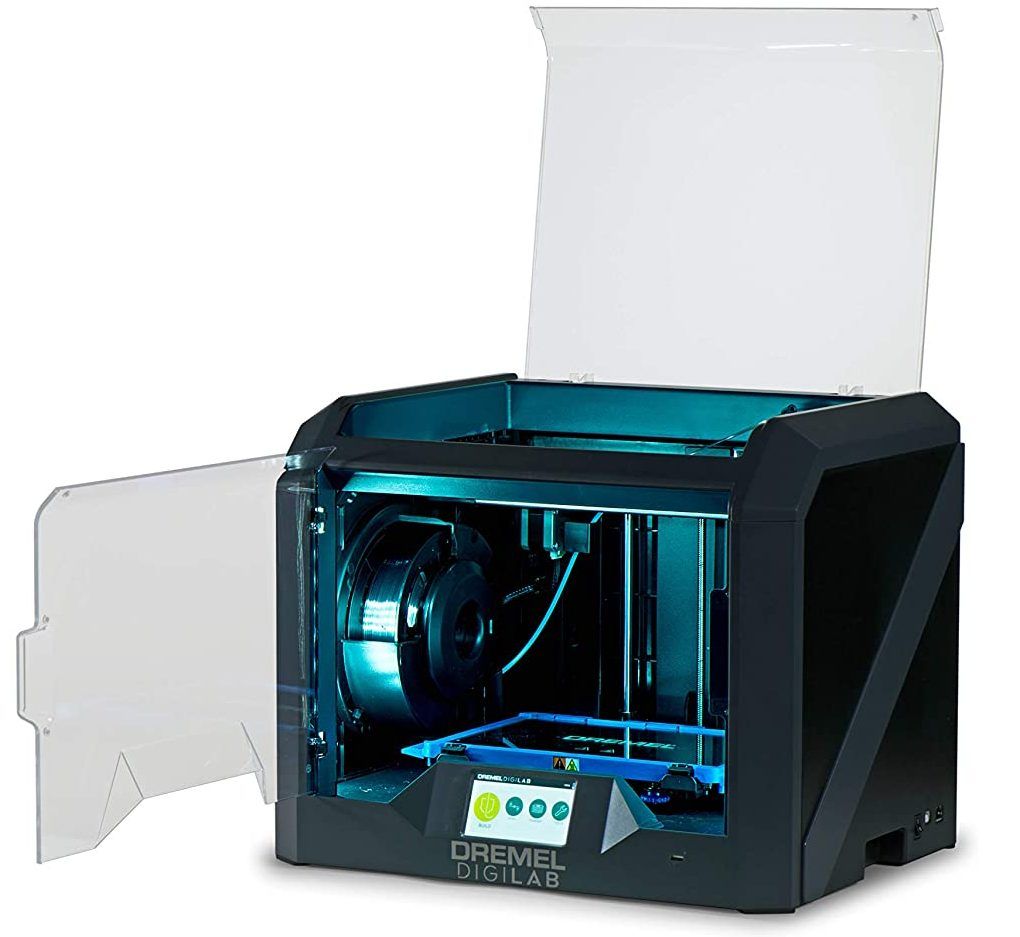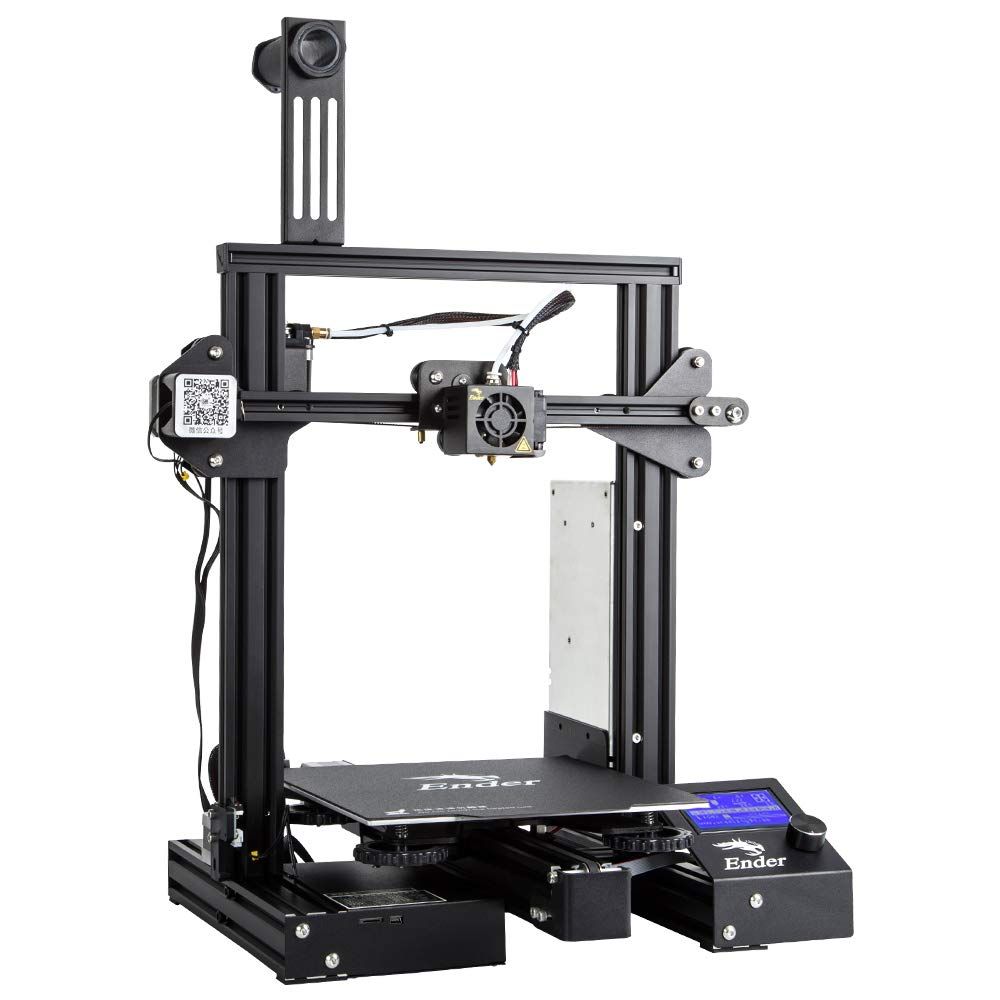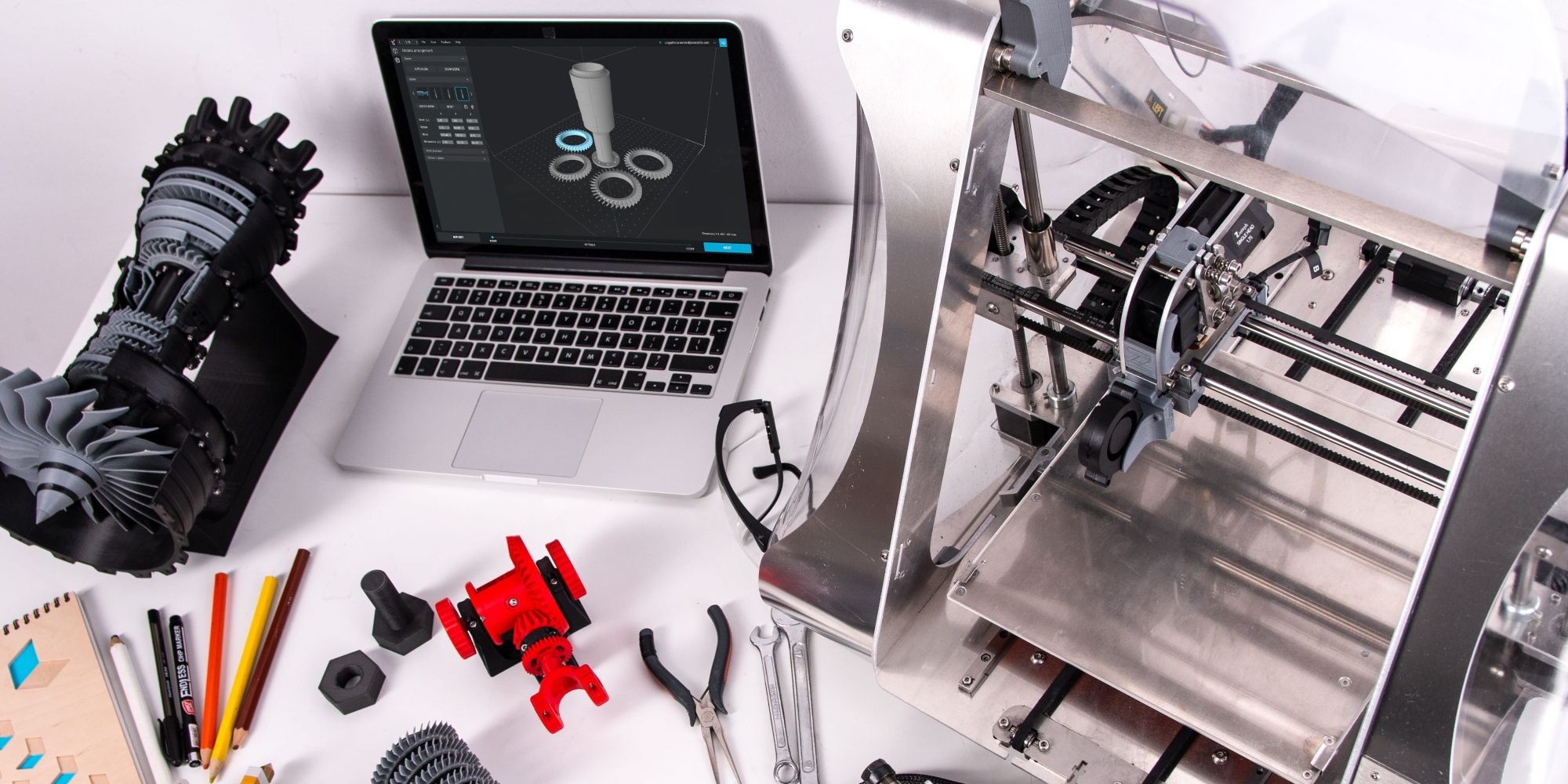3D printing is a relatively new technology in the computer space. The earliest record of the technology was in 1981 by Japanese inventor Hideo Kodama. The scientist relied on a product that used additive technology to create solid polymers. The printing technology was based on early stereolithography (SLA) processes.
Since then, 3D printing technology has accelerated at a fantastic speed with newer printing technologies being invented. Some of them include Fused Deposition Modeling (FDM) and Selective Layer Sintering (SLS). Consequently, the technology has become cheaper for beginners to consider.
The best 3D printer for beginners needs to be appropriately documented, easy to assemble and use, and should yield excellent print quality. Many people who are picking up 3D printing are handling the technology for the first time. They need a gentle learning curve to learn good production habits early enough.
3D printing is one of the leading technologies in the 21st-century electronics consumer market. Manufacturers have managed to strike a balance between providing new buyers with advanced and user-friendly technology. Here is a review of the best 3D printer for beginners. Take time to review each product and its unique features while taking into account your personal preferences. Once you finish this guide, you'll be able to pick one of the best 3D printers for beginners! Most beginners who buy 3D printers seek to use them for home or office needs. Regardless of your specific needs, you need to ensure that the printer delivers everything you want while being beginner-friendly. 3D printing will allow you to create beautiful models such as cosplay materials, phone cases, musical instruments, or figurines.
The world of 3D printing is relatively complicated since this section of the computer industry has existed for less than three decades. Understanding what makes a great entry-level 3D printer is essential to make the right decision. Keep in mind that entry-level 3D printers will have trimmed down features and are likely to be more budget-friendly.
You can easily position the printer on a compact desk as it measures 16.14 x 15.94 x 17.83 inches. The resume print function allows beginners to recover a printing object after a power loss or failure.
-
ANYCUBIC Mega Pro 3D Printer
-
Monoprice 121711
-
QIDI Technology X-one2
-
FlashForge Adventurer 3
-
Da Vinci Mini 3D Printer
Best Value -
LulzBot Mini
Premium Pick -
FlashForge 3D Printer Creator Pro
Editor's Choice
ANYCUBIC Mega Pro 3D Printer
- Excellent print quality
- Beginner-friendly
- Multi-color printing
- Easy to assemble
- No enclosure option
Unlike other entry-level 3D printers, the Monoprice ships ready for work. You will not have to assemble the 3D printer yourself before getting to work. Additionally, the printer comes pre-calibrated at the factory, ensuring that you only need to make a few adjustments to get started. The Monoprice 3D printer is the perfect model production machine for your home and office needs.
Monoprice 121711
- Great build quality
- High-quality output
- Compact design
- Quite slow
The X-one2 is sturdy and well built. The frames are made of metal, which makes it shock tolerant. The printer is also easy to assemble because all the guidelines are provided in the manual. The enclosed nature of the printer also creates a favorable environment for seamless printing. Additionally, there is an SD card that contains some videos to help you in the printing process. With two technologies combined with the 3D interface, the X-one2 is indeed a good starting point.
QIDI Technology X-one2
- Comes with a 6-month infinite customer support
- High precision printing
- Has a good ventilation effect
- Simple to operate
- Small build area
Additionally, no leveling is required for the build plate of the printer. The auto filament loading system suspends printing when the filament is broken and resumes printing after the filaments are detected.
FlashForge Adventurer 3
- Capable of printing wood materials
- Ultra-quiet
- The build plate is already labeled
- Auto-detection of filament
- The plate may need to be calibrated
The printer also comes with a one-year warranty. In case something goes wrong, get in touch with the manufacturer, and the problem will be fixed in record time. The best part about it is that customer support responds within the shortest time. With stable printing, safe filament, and easy operation, the 3D20 printer is a good choice for a beginner.

Dremel DigiLab 3D45 3D Printer
- One year warranty
- Quick and easy to use
- Reliable
- Fully enclosed
- Build plate leveling is done manually
The printer is easy to assemble and take apart, which makes it perfect for beginners who want to produce high-quality work and learn how 3D printing works. Consider getting a Comgrow Creality Ender 3 printer today for all your modeling work.

Comgrow Creality Ender 3 Pro 3D Printer
- High-quality output
- Fast speeds
- Great product support
- The bed is not flat
Unlike other entry-level 3D printers that use petroleum plastics for printing, the Da Vinci Mini 3D relies on PLA plastics made from cornstarch. By using this printer, you will be contributing to a greener environment. The Da Vinci Mini 3D is the perfect printer for home and small office needs.
Da Vinci Mini 3D Printer
- Ready to go out of the box
- Intuitive software
- A detailed documentation
- Wi-Fi is weak
The final products of the LulzBot Mini are of high quality with a robust and smooth finish. Apart from calibration, it is also self-cleaning and gets rid of all previous residue before printing new material.
LulzBot Mini
- Can use both flexible and rigid material
- Easy to use
- High quality printing
- It is too open
One of the areas that stand out in the FlashForge 3D Printer Creator Pro printer's design and functionality is the plate. The device comes with an aviation-level aluminum plate with sufficient thickness to ensure that it does not warp under heat. You should consider getting the FlashForge 3D Printer Creator Pro printer today, especially if you are active in CAD modeling.
FlashForge 3D Printer Creator Pro
- High-quality output
- Easy to assemble
- Sturdy build
- Too slow
What You Should Know Before You Start 3D Printing
The 3D printing technology that a printer uses determines its suitability for beginners. The most popular 3D printing technology is Fused Deposition Modeling (FDM). The approach uses an additive technique where plastic is heated and extruded continuously. On the other hand, Stereolithography uses ultraviolet light to harden a model made out of a photosensitive liquid.
SLS 3D printing is similar to Stereolithography, except for the materials that are used. Printers based on SLS technology use laser beams instead of ultraviolet light and powders instead of a light-sensitive liquid. With a few exceptions, most beginner-friendly 3D printers are based on FDM technology. Most printers that employ the other two techniques are usually larger and more expensive. You are likely to find them in bigger organizations and production environments.
The materials used in a 3D printer will go a long way in determining whether the end product is suitable for your needs or not. The most typical raw materials for 3D printing are Polylactic acid (PLA) and Acrylonitrile Butadiene Styrene (ABS).
Your choice in determining the most appropriate printing material will depend on several factors. You need to consider the end product, the level of detail, and the budget you have in mind.
Polylactic acid is a special plastic derived from corn. The material is excellent for beginners since it makes it easy to create simple office and household items. Other benefits of PLA include environmental friendliness, quicker cooling, and availability in multiple colors.
On the other hand, ABS is manufactured from petroleum plastics. The material guarantees more strength and durability. ABS has a high melting point, which makes it suitable for printing harder models.
As a beginner in 3D printing, you should think about the safety of the equipment. Fumes, heat, and plastics are going to be common materials in your office. The best printers for starters come with the necessary safety instructions and guarantees. Aside from the tips discussed here, these reviews of the best 3D printer for beginners will assist you in making your decision. Now that you've reached the end of this guide, you can revisit our list of products and find one of the best 3D printers for beginners!
FAQ
Q: What safety tips should beginners keep in mind when using a 3D printer?
Depending on the material you’re using, temperatures may rise from 390 to as high as 700 degrees Fahrenheit. Remember that some printers have no enclosure, meaning the deposited material may cause severe burns when touched. You should wait till the object cools down before removing it from the bed.
Some 3D printers lack a collision detection function, and the mechanical movements may pinch your fingers if you accidentally get on the way. Ensure you only touch your 3D printer when it’s turned off or not printing.
While eye injuries caused by 3D printers are rare, they are bound to happen, so remember to wear safety goggles. In addition, use your 3D printer in a highly ventilated room to avoid experiencing headaches and drowsiness from the fumes of the hot plastic.
Q: What are the basic steps of 3D printing?
While there are various 3D printing processes, nearly all of them follow three basic steps. Modeling is the first process where you design your desired model using computer software. Computer-aided design (CAD) is the most popular, and there are various types, each with its unique benefits. Make sure you pick CAD software that can detect errors to get the most out of your model.
The printing process involves building an object. The 3D printer uses instructions in the respective file to determine how the material will be deposited.
The final step is finishing, and as the name suggests, this process makes final touches on your model. For instance, the 3D printer may add solvents to eliminate superficial imperfections and create a smooth finishing.
Q: Is a 3D printer a worthy investment?
Yes, whether you want one to print unique objects for your family or make money, a 3D printer allows you to test the limits of your creativity and find new solutions to past challenges. Most 3D printers for beginners are easy to use, enabling you to print almost anything you like with ease.
You can decorate a flower pot, fix broken handles, design chandeliers exteriors, customize gifts for your loved ones, and more. In addition, most have a compact design, making it easy to fit in cramped places. Simply put, 3D printers allow beginners to participate in an ever-changing field of technology.
Q: How can I maintain proper performance in my 3D printer?
Beginners should have a basic tool kit with a small brush, a piece of clean cloth, grease, screwdrivers, and pliers. Once in a while, access the internal parts to see whether there are any potential issues like loose electrical cables. A crucial area is the heat bed since the connectors take up a higher current during printing.
Mechanical maintenance includes inspecting wear and tear on parts that are prone to getting loose over time. You can re-tighten the screws and apply your lubricant to minimize friction. There are various types of greases, so ensure you use the one recommended by the manufacturer.
Use a brush or cloth to remove dust that may have accumulated around the nozzle and other exposed parts.
Q: What factors should beginners consider when buying a 3D printer?
Arguably, ease of use should be your top consideration if you want a smooth printing process. Buying a 3D printer with features like filament sensor, auto-bed leveling, and heated bed eliminates the need to monitor the printing process constantly.
The build area is a crucial factor to consider since it determines the size of prints you can create. Smaller print beds may require beginners to use software to split the object and glue it together, which is challenging. It’s advisable that you opt for a printer with a large bed since smaller ones will limit your build volume.
Most beginner-level 3D printers use ABS and PLA filament because they make the printing process straightforward. However, if you want more professional prints, you can pick a printer that supports more filaments. Other factors to consider are safety, print speed, and resolution.

